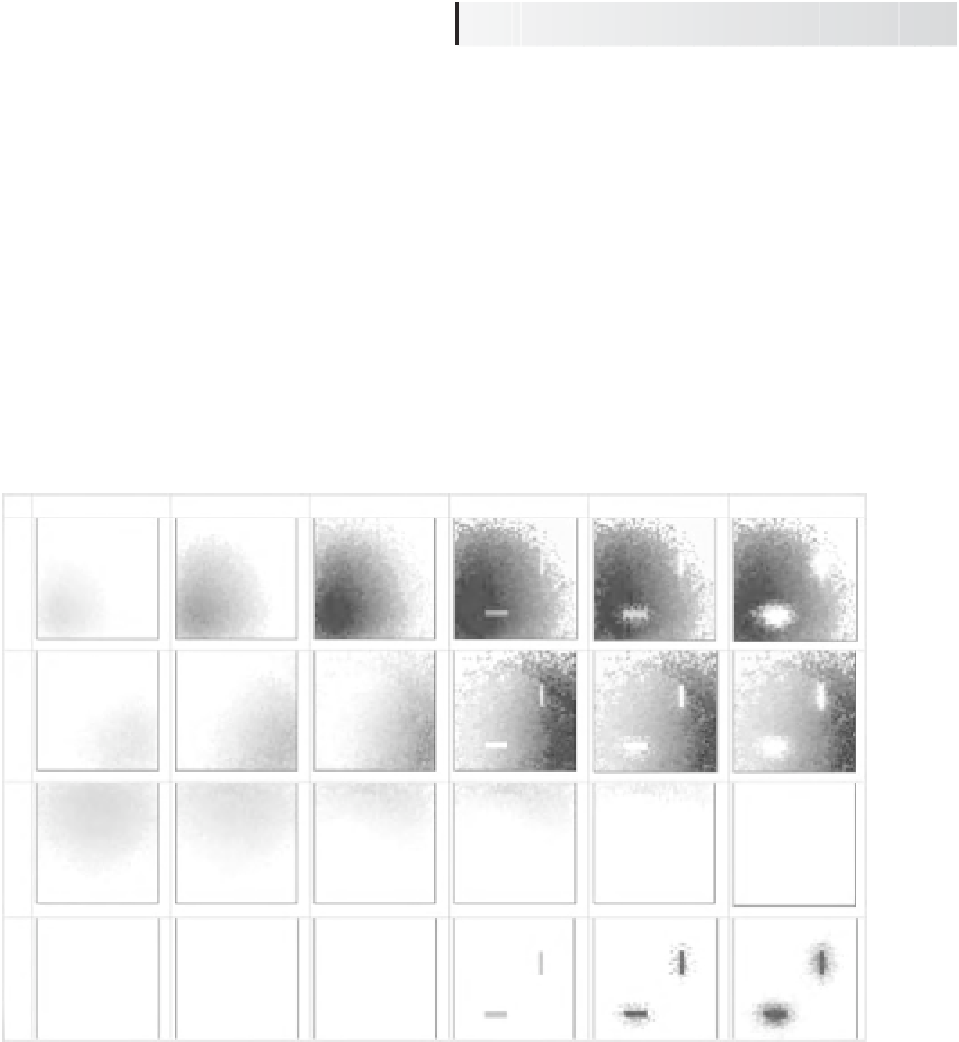Environmental Engineering Reference
In-Depth Information
patterns simply reflect the isolated model behaviour being
distributed in space with changing conditions.
The complexity of the exercise can be increased
(Figure 14.7b) by adding fire disturbance with removal
of biomass in burned pixels and by the use of a dynamic
model to simulate the distribution of animals in the
landscape and hence grazing pressure (Legg
et al
., 1998).
The simulation shows (Figure 14.9) a concentration of
herbivores in the burned area, which reflects the higher
grazing value for the early successional-stage vegetation.
However, as grazing removes the highly palatable
Rubus
,
and to a lesser extent
Ulex
, the animals spread again
around the landscape with a more even distribution. The
distribution of animals, of course, creates feedback to the
growth of plants and the process of vegetation dynamics.
A last exercise incorporated a seed dispersal model
(Figure 14.7c) (Heathfield
et al
., 2001). While in the pre-
vious examples all species were considered to be present
in all pixels from the start of the simulation, in this case
patchy distributions were considered with new establish-
ment by colonization from neighbouring cells occurring
during the modelling exercise. The results are reported in
Figure 14.10 and show, in the initial period, an expanding
area of dominance by
Ulex
and to less extent by
Erica
,
whereas
Rubus
is strongly reduced in cover by compe-
tition with the other species. Later on, the introduction
of two plantations of
Eucalyptus
sp. are considered as
a possible source of a colonizing, highly competitive,
exotic species. The final outcome is a changing scenario
of plant dominance patterns with a clear reduction of the
native shrubs.
14.5 Conclusions
The modelling exercises reported in this chapter showed
the power of existing modelling tools to examine some
of the complex interactions of ecological processes, such
as the combined effects of grazing, fire and dispersal
processes, on patterns of plant competition. The level of
model integration achieved allows the theoretical inves-
tigation of well-known ecological processes such as the
successional patterns under different disturbance regimes
and the effects of the introduction of exotic species on the
diversity of natural vegetation (Holmgren, 2002).
Different models can be created which include other
integrated objects and spatial models. For example, the
addition of changing resource levels (such as water uptake
Time (months)
0 (No grazing)
6 (Grazing)
12
24
36
48
Figure 14.10
Results of a 60-year model run of simulated vegetation dynamics including plant growth (pixel process) and seed
dispersal (spatial process). At the start, only three competing species are present, whereas the fourth is introduced as two plantations
after 35 years. Dispersal from planted plots alters the dominance patterns of the natural vegetation in the surrounding area.



Search WWH ::

Custom Search